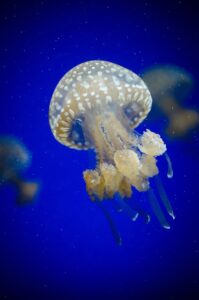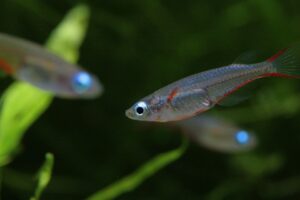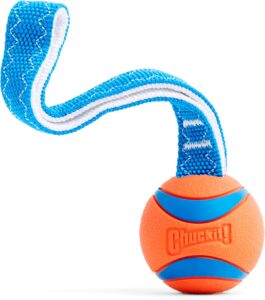
Goldfish are one of the most popular and recognizable types of fish kept as pets. Known for their vibrant colors and graceful swimming, they are often a first choice for both novice and experienced aquarists. Despite their popularity, goldfish require specific care to thrive. This comprehensive guide will detail essential goldfish care basics to ensure optimal health and longevity for your aquatic companions.
Understanding Goldfish Varieties
Goldfish (Carassius auratus) come in various shapes, sizes, and colors. It’s crucial to understand the different varieties to provide the best care. Common types include:
- Common Goldfish: Known for their hardiness, they are excellent for beginners and can grow quite large.
- Fancy Goldfish: These include varieties like Orandas, Ryukins, and Fantails, known for their unique body shapes and colors.
- Comet Goldfish: Similar to common goldfish but with a more elongated body and longer tail fin.
Each variety has specific needs, particularly regarding space and water conditions, which will be discussed in detail below.
Setting Up the Perfect Goldfish Tank
Tank Size
One of the most common misconceptions about goldfish is that they can live in small bowls. In reality, goldfish require substantial space to grow and thrive. A single goldfish needs a minimum of 20 gallons, and an additional 10 gallons for each additional fish. Larger varieties, like the common goldfish, may require even more space.
Filtration System
Goldfish produce a significant amount of waste, which can quickly degrade water quality. A robust filtration system is essential to maintain a clean and healthy environment. Look for filters that offer both mechanical and biological filtration to effectively manage waste and maintain a stable nitrogen cycle.
Substrate and Decorations
Goldfish enjoy exploring their environment, so providing a substrate like rounded gravel or sand can encourage natural foraging behavior. Avoid sharp decorations that could harm their delicate fins. Instead, opt for smooth rocks and live or artificial plants to create a stimulating and safe environment.
Temperature and Lighting
Goldfish are cold-water fish and thrive in temperatures between 65°F to 72°F (18°C to 22°C). Maintain a stable temperature with a reliable aquarium heater if needed. Adequate lighting is also essential for plant growth and to mimic natural day-night cycles, helping regulate the goldfish’s biological clock.
Maintaining Water Quality
Regular Water Changes
To keep your goldfish healthy, perform regular water changes to maintain high water quality. Aim to change 20-30% of the tank water weekly. This practice helps remove waste products and replenishes essential minerals.
Water Testing
Regularly test the water parameters to ensure they are within optimal ranges. Key parameters include:
- Ammonia and Nitrite: Both should be at 0 ppm, as they are toxic to fish.
- Nitrate: Keep below 20 ppm to prevent stress and health issues.
- pH Level: Goldfish prefer a pH between 7.0 and 8.4.
Using a reliable water testing kit will help you monitor these parameters effectively.
Feeding Your Goldfish
Dietary Needs
Goldfish are omnivores and require a balanced diet to stay healthy. High-quality goldfish pellets or flakes should form the staple of their diet, supplemented with fresh vegetables like peas, lettuce, and spinach. Occasionally, offer protein-rich foods such as bloodworms or brine shrimp.
Feeding Schedule
Feed your goldfish small amounts 1-2 times daily. Only provide as much food as they can consume in 2-3 minutes to prevent overfeeding, which can lead to water quality issues and health problems.
Monitoring Goldfish Health
Signs of a Healthy Goldfish
A healthy goldfish should exhibit bright colors, active swimming, and a good appetite. Their fins should be intact and free of tears or spots.
Common Health Issues
Goldfish can suffer from various health problems, including:
- Ich (White Spot Disease): Look for white spots on the body and fins, and treat promptly with appropriate medication.
- Fin Rot: Caused by bacterial infection, fin rot appears as ragged or fraying fins.
- Swim Bladder Disorder: Affects buoyancy, causing the fish to float sideways or upside down. Adjusting diet and feeding practices can help.
Promptly address any signs of illness by isolating affected fish and consulting with a veterinarian specializing in aquatic animals.
Goldfish Behavior and Interaction
Goldfish are social creatures and thrive in groups. Observing their behavior can offer insights into their health and well-being. They may engage in playful chasing or gentle nipping, which is normal. However, persistent aggression might indicate stress or overcrowding.
Conclusion: Ensuring a Long and Healthy Life for Your Goldfish
Caring for goldfish involves more than just setting up a tank and feeding them. It requires a commitment to maintaining optimal water quality, providing a balanced diet, and monitoring their health. By understanding their needs and addressing them proactively, you can ensure your goldfish enjoy a long, healthy, and fulfilling life.
Goldfish care is a rewarding experience that offers the opportunity to observe and interact with these fascinating creatures. With proper attention and care, your goldfish can become a vibrant addition to your home and a joy to watch for years to come.
#ChatGPT assisted in the creation of this article.








